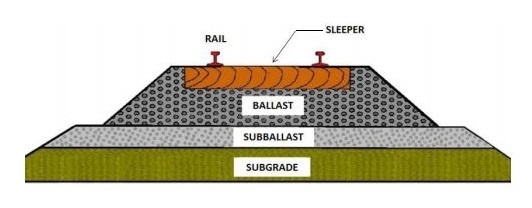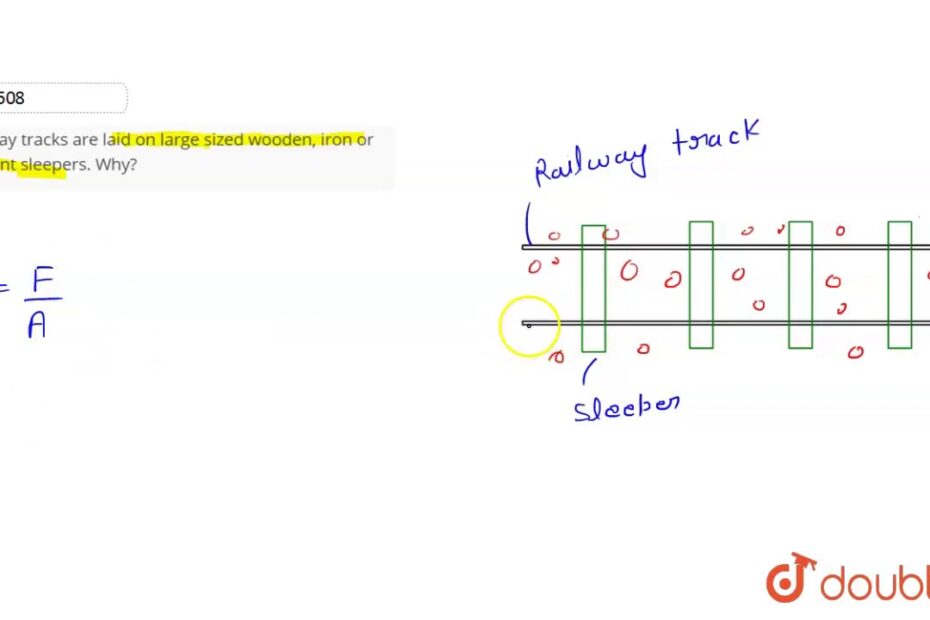Why Are Railway Tracks Resting On Concrete Or Wooden Sleepers?
Railway Tracks Are Laid On Large Sized Wooden, Iron Or Cement Sleepers. Why?
Keywords searched by users: Why are railway tracks laid over concrete or wooden sleepers why steel is used to make railway lines
Why Are Railway Tracks Laid On?
Railway tracks are strategically placed on substantial concrete sleepers for a specific reason. These concrete sleepers boast significant dimensions, and this size plays a crucial role in minimizing the pressure exerted on the ground. To clarify, pressure and surface area share an inverse relationship, meaning that increasing the surface area effectively decreases the pressure experienced by the tracks and the underlying ground. This intelligent engineering choice ensures the stability and longevity of railway infrastructure while mitigating potential damage to the terrain.
Are Wood Or Concrete Railway Sleepers Better?
When comparing wood and concrete railway sleepers, it becomes evident that concrete sleepers offer numerous advantages that make them a preferred choice for various railway applications. Concrete sleepers boast an extended lifespan, exceptional stability, minimal maintenance requirements, a low rate of damage, and reduced scrap generation. These qualities render them particularly suitable for high-speed railway systems, where their superior stability is crucial for safe and efficient operations. Consequently, many countries have opted for concrete sleepers when constructing high-speed passenger rail lines, underscoring their role as a cornerstone of modern railway infrastructure.
Why Concrete Sleepers Are Used In Railways?
Concrete sleepers, also known as railroad ties, are a preferred choice in railway infrastructure for several compelling reasons. Unlike their wooden counterparts, concrete sleepers offer enhanced durability and longevity as they do not succumb to rot, ensuring the longevity of railway tracks. Furthermore, the substantial weight of concrete sleepers contributes significantly to the stability of the tracks, particularly in the face of temperature fluctuations and heavy train traffic. This added weight helps prevent track misalignment and ensures smoother train operations.
Another noteworthy advantage of concrete sleepers is their fire-resistant properties, a crucial safety feature in railway applications. Unlike timber sleepers, which are susceptible to fire hazards, concrete sleepers can withstand high temperatures, reducing the risk of railway accidents due to fire.
Additionally, concrete sleepers demand less maintenance, making them a cost-effective choice over time. Their extended lifespan and reduced maintenance requirements translate to substantial long-term savings for railway operators. In summary, concrete sleepers offer a comprehensive set of advantages, including durability, stability, fire resistance, and cost-efficiency, making them a preferred choice for railway track construction and maintenance.
Share 41 Why are railway tracks laid over concrete or wooden sleepers







Categories: Update 44 Why Are Railway Tracks Laid Over Concrete Or Wooden Sleepers
See more here: c1.chewathai27.com

This prevents the shrinking of the ground under the weight of the train. So, we can say, Railway tracks are laid on large sized wooden sleepers so that the thrust due to the weight of the train is spread over a large area . This reduces the pressure on the ground which would prevent the yielding of the ground.We have seen that the railway tracks are laid down on large-sized concrete sleepers because the concrete sleeper has a very large size and that large size helps to reduce the pressure on the ground. As the pressure is inversely proportional to the area if we increase the surface area then we get reduced pressure.Concrete sleepers have many advantages like longer lifespan, high stability, small maintenance, low damage rate and low scrap rate. They are widely used in high speed railway and the stability is much higher than wood sleepers. Many countries chose concrete sleepers to build high speed passenger line.
Learn more about the topic Why are railway tracks laid over concrete or wooden sleepers.
- Explain why wooden or concrete sleepers are kept … – Vedantu
- Railway tracks are laid on wooden or cemented sleepers. This …
- Three Types of Rail Sleepers And Their Own Features
- Work Study Report on Review of Staff Working in Concrete Sleeper Plant …
- Why Wood? – Railway Tie Association
- How are train tracks laid? – YouTube
See more: c1.chewathai27.com/category/money-policy
